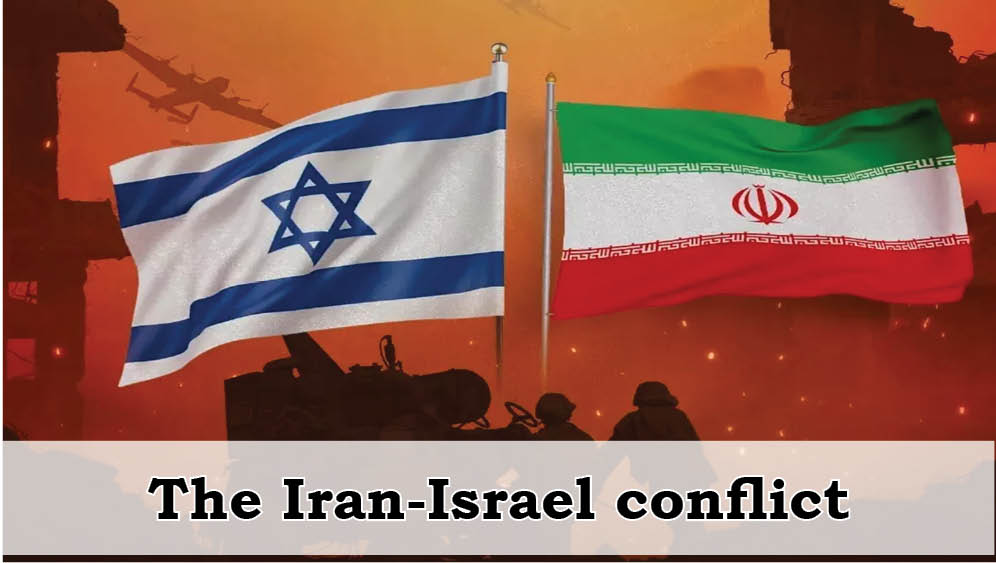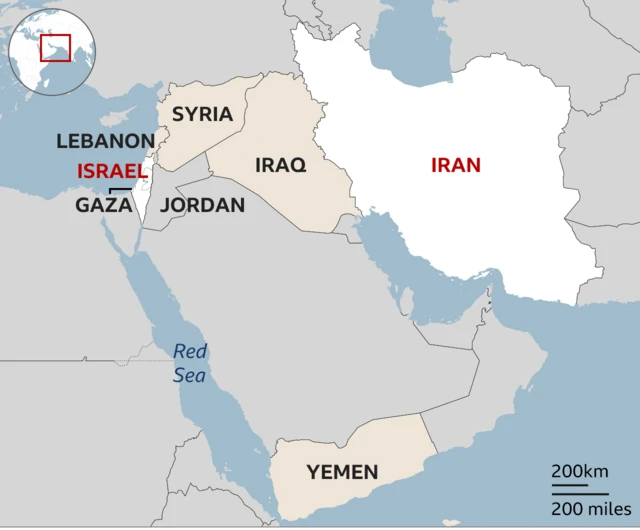Context:
In June 2025, Iran and Israel fought a brief but intense war that lasted 12 days. The conflict began on June 13 when Israel launched “Operation Rising Lion,” a major military campaign targeting Iran’s nuclear infrastructure and military leadership.
Israel claimed its attacks were necessary to delay Iran’s nuclear programme, which Israeli intelligence believed was advancing rapidly. The strikes hit several critical sites and eliminated many senior Iranian military officials. The damage was severe:
- Iran’s main nuclear facilities were attacked
- Large parts of the air defense systems were destroyed
- Over 600 people, including civilians, died
Despite these heavy losses, Iran refused to surrender. The Iranian government recovered quickly and launched waves of ballistic missile and drone attacks on Israeli cities and military targets. These attacks revealed weaknesses in Israel’s air defenses and caused further casualties.
Historical Background: From Cooperation to Hostility:
Pre-1979 Relations
- Before 1979, Iran and Israel were not enemies. In fact, Iran was one of the first Muslim-majority countries to recognize Israel after its creation in 1948.
- Iran’s then-ruler, Shah Mohammad Reza Pahlavi, maintained close ties with Israel. The two countries cooperated in trade, especially oil sales, and shared intelligence. Israel, surrounded by hostile Arab neighbors, followed a “periphery doctrine,” under which it built alliances with non-Arab states like Iran and Turkey to balance Arab power.
- Both nations were also strong allies of the United States.
The 1979 Islamic Revolution:
- The situation changed completely in 1979 when the Shah was overthrown, and Iran became an Islamic Republic under Ayatollah Khomeini. The new leadership viewed Israel as an occupier of Palestinian land and called it the “Little Satan.” The United States was labeled the “Great Satan.”
- Iran began to support anti-Israel groups, especially those active in Lebanon and Palestine, and openly opposed Israeli policies.
The Shadow War:
Even though Iran and Israel did not fight a full-scale war until 2025, they were locked in a long-running “shadow war.”
- Israel conducted airstrikes against Iranian-linked targets in Syria to prevent weapons transfers to Hezbollah.
- Iran funded and armed groups like Hezbollah in Lebanon and Hamas in Gaza.
- In 2010, a cyberattack using a virus called Stuxnet disrupted Iran’s uranium enrichment programme. The attack, believed to be a joint U.S.-Israeli operation, was the first known cyberattack targeting industrial equipment.
These actions deepened mutual hostility and laid the groundwork for the 12-day war.
Role of the United States:
- The United States played an important role in the conflict. Initially, U.S. President Donald Trump supported Israel’s campaign and called for Iran’s “unconditional surrender.” U.S. forces helped intercept many of the missiles fired at Israel.
- But when Iran launched retaliatory strikes on American military bases in Qatar and Iraq, the U.S. grew concerned about a wider war. The American leadership, remembering the long wars in Iraq, Libya, and Afghanistan, was reluctant to get involved in another prolonged conflict.
- Eventually, the U.S. joined Israel in striking Iran’s nuclear plants to give Israel an exit strategy but then pushed strongly for a ceasefire. This diplomatic pressure forced Israeli Prime Minister Benjamin Netanyahu to end the fighting, even though he had earlier suggested that the campaign could overthrow the Iranian regime.
- American intelligence later assessed that Iran’s nuclear programme was only delayed by a few months, not years, showing the limits of military action.
Impact on Central Asia:
Although Iran and Israel are not immediate neighbors of Central Asia, the conflict has significant ripple effects across the region, particularly for countries like Turkmenistan, Uzbekistan, and Kazakhstan.
· Economic Consequences: Iran plays a vital role in Central Asia’s trade and energy routes. Turkmenistan depends on natural gas sales to Iran. Kazakhstan and Uzbekistan use Iranian ports to export goods. The North-South Transport Corridor—connecting Russia, Kazakhstan, Turkmenistan, and Iran to the Indian Ocean—is a strategic lifeline. Any disruption, such as damage to Iranian logistics infrastructure or ports like Chabahar, can drive up inflation, delay exports, and hurt already fragile economies.
· Aviation Risks: Iranian airspace is crucial for flights connecting Central Asia to the Gulf. Airlines such as Air Astana and FlyArystan have had to reroute to avoid Iranian airspace, causing longer travel times and higher costs.
· Security Concerns: Iran has tried to exert ideological influence across Central Asia by appealing to shared religious ties. There are also credible reports that Iran has tried to recruit Central Asian nationals for anti-Israeli activities. For example, Uzbek nationals allegedly linked to Iran were involved in the murder of an Israeli rabbi in the UAE in 2024. This raises concerns about radicalization in countries with young, economically vulnerable populations.
· Migration Risks: If instability escalates further in Iran, there could be waves of refugees heading east into Central Asia. Turkmenistan, which shares a land border with Iran, could face a humanitarian and security crisis, including pressure on resources and social tensions.
Strategic Balance and Foreign Policy Dilemmas:
The Iran-Israel conflict is testing Central Asia’s balancing strategies. While Iran remains important for energy and logistics, Israel is increasingly viewed as a gateway to Western technology in agriculture, cybersecurity, and water management.
Regional governments have so far adopted a cautious tone. Kazakhstan and Uzbekistan issued security warnings to their citizens but avoided condemning Iran directly, reflecting their dependence on Iranian transit routes and energy supplies. Central Asian countries want to preserve their neutrality but will likely need to reassess their security frameworks and diplomatic alignments if hostilities resume.
Need for a Diplomatic Solution”
The most striking lesson from the conflict is the failure of military action to produce lasting solutions. Even after extensive strikes, Iran’s nuclear capabilities were only briefly delayed, while the region edged closer to a major war.
For diplomacy to succeed, several factors are critical:
1. Serious negotiations that address both Israel’s security concerns and Iran’s demands for economic relief.
2. International guarantees to monitor and verify Iran’s nuclear program.
3. Efforts to rein in proxy groups that deepen cycles of retaliation.
4. Broader regional dialogue, possibly through the United Nations or regional security forums, to manage escalation risks.
Conclusion:
The Iran-Israel conflict has underlined the fragility of West Asia’s security architecture and revealed how even distant neighbors like Central Asia are directly affected by war. As the ceasefire holds for now, the situation remains highly unstable. A return to open conflict could further disrupt trade, endanger civilians, and undermine already fragile non-proliferation norms.
Long-term stability will depend not on tactical pauses or military strikes, but on sustained diplomacy, regional cooperation, and credible commitments to peace. Without addressing core grievances, the region will remain trapped in a cycle of escalation, with consequences felt far beyond its borders.
| Main question: Discuss how the Iran-Israel conflict has exposed the vulnerabilities of Central Asian economies and their foreign policy balancing strategies. What lessons can India draw from this situation for its own engagement with the region? |








